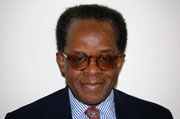
Jim Crow’s ancestors – and children
By Lee A. Daniels NNPA Columnist
At first glance, one might be hard-pressed to think that a recent opinion piece on the 1970s origins of the religious right as a political force and a new book on the causes of America’s founding, the war of independence of the 1770-1780 decades, would have much in common—beyond the fact that both were written by distinguished historians.
But both exercises do have a great deal in common.
For one thing, they show how history – the truth of what happened at particular moments or periods in the past – can be buried beneath more palatable myths. For another, they reveal how race and racism have always been at the center of the American experience. For still another, they underscore that anti-Black bigotry has always been the cornerstone of America’s tradition of exclusion – the “evil twin,” if you will, of the nation’s vaunted tradition of inclusion.
For example, contrary to the naïve predictions of the first weeks after President Obama’s 2008 election, his tenure has proven how a powerful force what one might call the Jim Crow Impulse remains in American society.
Writing in the May 27 issue of Politico.com magazine, Dartmouth College historian Randall Balmer corrects the notion that religious right was formed to oppose the 1973 U.S. Supreme Court decision in Roe v. Wade, which legalized abortion.
Actually, as Balmer shows in “The Real Origins of the Religious Right,” much of the evangelical leadership at the time either approved of the decision or was largely indifferent to it. One reason for that, Balmer writes, was that many considered the campaign to outlaw abortion a “Catholic issue.”
He contends that the religious right’s true beginnings occurred nearly half a decade earlier. That’s when White evangelicals in the South began establishing all-White “Christian academies” in response to the possibility that the political victories of the Civil Rights Movement would actually bring integration to public schools throughout the region.
Balmer cites the Green v. Kennedy federal court lawsuit of 1970 as pivotal.
The previous year, a group of Black parents in Holmes County, Miss. had sued the U.S. Treasury Department to prevent it granting tax-exempt status to three new Whites-only K-12 private academies there. The backdrop to the suit was that when federally-mandated desegregation had been implemented in the county’s public school system that very year, the number of White students in the public schools declined from 771 to 28. The next year, 1970, every White school-age student in the county was enrolled in a Whites-only academy.
The Black parents argued that those schools’ discrimination policies made them ineligible for federal support. A federal court issued a preliminary injunction in favor of the parents; and later that year the Nixon administration ordered the Internal Revenue Service to issue new regulations denying tax-exempt status to all such “seg academies.” The religious right’s fury at that ruling festered until 1979, when, as Balmer writes, its leader “seized on abortion not for moral reason, but as a rallying cry to deny President Jimmy Carter a second term. … Because the anti-abortion crusade was more palatable than [its] real motive: protecting segregated schools.”
Gerald Horne, professor at the University of Houston, contends in his just-published book, The Counter-Revolution of 1776: Slave Resistance and the Origin of the United States of America, that it wasn’t “liberty” but the protection of White economic and racial advantage that forged the successful settler rebellion that created the United States of America.
In other words, the American War of Independence wasn’t a revolution. It was a “counter-revolution” to protect the British colonists’ use of African slavery as the foundation of their economic well-being. That’s one reason it was overwhelmingly led by wealthy merchants – not only slave owners and slave traders in the South, but titans of the Northern-centered banking, insurance, manufacturing and shipping industries as well. (In fact, the most prominent slave traders of the period lived in Massachusetts and Rhode Island.)
The supporting evidence Horne presents from the decades of 1688 to 1776 that are the book’s focus is voluminous and persuasive. It includes his extensive discussion of the intrigues and wars among Britain, France and Spain over their North American possessions; the influence of the continual slave revolts in the Caribbean as well as on the North American mainland; and, ultimately, Britain’s use of African soldiers in the troops it sent to police its increasingly troublesome colonists.
All this, and more, Horne asserts played a role in the “grimy origin” of the United States. But at its center was the issue of the presence and status of the African-becoming African-American peoples whose enslavement was the source of White wealth and power in the New World.
That’s a perspective worth remembering as the U.S. prepares to celebrate its counter-revolutionary war of independence.


Be the first to comment